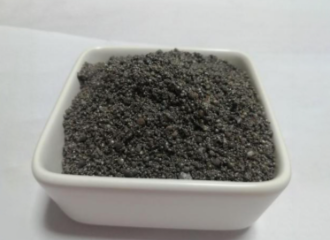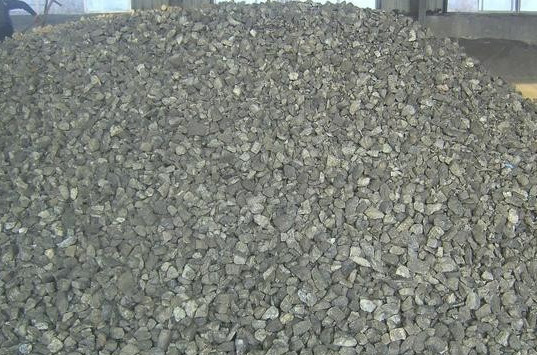What is ultra-high strength concrete?
 Oct 26, 2022|
Oct 26, 2022| View:648
View:648ultra high strength concrete in the international arena refers to the kind of compressive strength of 150 MPA or more, and has ultra-high toughness, ultra-long durability of the cementitious composite materials collectively. Among them, more representative of ultra high performance concrete materials for the active powder concrete RPC, early by French scholars in 1993, mainly composed of silica fume, cement, water reducing agents, fine aggregates and steel fibers and other materials, in accordance with the principle of greater compactness to build, so that the material can be reduced to fewer internal defects (pores and micro-cracks).

Ultra high strength concrete is a special engineering material with high strength, toughness and durability, which has good application prospects in the fields of national defense engineering, marine engineering, nuclear industry, special security and protection engineering, and municipal engineering. It has been tested and proven that its flexural strength is three times that of ordinary C50 concrete, and its shrinkage is reduced by 50%, and it remains intact after 700 freeze-thaw cycles.
UHPC material components do not contain coarse aggregate, particle size is generally less than 1MM, because of the high degree of denseness and has super high strength and excellent durability. Studies have shown that the compressive strength of UHPC can reach more than 200 MPA, while the durability of the material can reach more than 200 years. In addition, the fine steel fibers dispersed in UHPC can greatly slow down the expansion of micro-cracks inside the material, thus making the material exhibit ultra-high toughness and ductility performance.
1、What is the design principle of ultra high strength concrete substrate material?
Dense build-up. This is one of the basic principles of the design of all dense powder materials, UHPC's high density and good performance, so that the surface in contact with the template has a high degree of finish, the external harmful media is difficult to invade the UHPC, and UHPC colorants and other components are not easy to precipitate outward, the use of this feature can be used as the exterior of the building UHPC decorative materials.
2、How to choose the fiber for UHPC?
Considering the cost performance, you can give priority to metal fibers, followed by non-metal fibers. When different fibers are mixed, it is necessary to test carefully and then choose reasonably.
3、Why is it not recommended to use large size aggregates for UHPC?
This involves the problem of material fracture mechanics, including the size of the original crack and defect density; also involves the problem of material homogeneity, such as the spatial distribution of large particles; also involves the problem in porous materials, unless necessary (or member cross-sectional size is large enough), generally should not use >5MM aggregate (unless really necessary, such as shrinkage reduction, cooling, cost reduction, etc.)!
4、What is UHPC suitable for?
Where conventional concrete cannot meet the requirements! High seepage resistance, high frost resistance, high resistance to salt erosion requirements; high seismic, blast resistance, anti-cracking requirements, the use of UHPC high tensile strength, corrosion-resistant nature of oil and gas pipelines to replace the cost of large diameter thick-walled steel pipe, significantly improve the durability of the pipeline, reduce costs; oversized span structures, large shell structures, curved structures; repair and reinforcement of old structures, etc., UHPC has been used in the outer protection layer of the steel structure of the offshore oil platform, which can greatly improve the service life of the pillars in the water level change area; used in the military and security field, manufacturing anti-explosion and anti-impact devices.

5、How to ensure the basic quality of UHPC?
The cubic compressive strength of fiberless base material is not less than 150MPA, the tensile strength is not less than 5MPA, the permeability is two orders of magnitude lower than C80, and there are no bubbles visible to the naked eye; these are also entry-level quality requirements. In addition, should be exempt from the common deterioration problems of conventional concrete (including HPC) (including steel corrosion, freeze-thaw damage, alkali-aggregate reaction and sulfate erosion), so that the UHPC is worthy of the title of the real UHPC; if still plagued by these deterioration phenomena, it is not worthy of the name UHPC.
6、Can the anti-wear and fire resistance of UHPC be much higher than C80?
The anti-wear and fire resistance of cement-based materials need to be specially designed, and there is no fixed relationship with the compressive strength or denseness of the material; the anti-wear and fire resistance of UHPC can be designed to be excellent, but it is not easy to achieve an order of magnitude or several orders of magnitude improvement compared with C80.
7、Why the elastic mode of UHPC is not easy to reach above 55GPA?
UHPC is still a cement-based material and the bonding type has not changed essentially, so it is not possible to improve it significantly. Adding high strength and high hardness aggregates to UHPC can improve the elastic modulus to reach 60-70GPA level.
8、What kind of UHPC is more cost-effective?
With the current domestic production level, the standard cubic compressive strength between 150-200MPA, tensile strength between 7-12MPA, permeability is lower than C80 two orders of magnitude of UHPC material cost-effective; with future technological development, these indicators will change.
9、What are the weaknesses of UHPC?
Like other cement-based materials, it is not resistant to acid corrosion (including the erosion of sulfate bacteria, although it is much better than OPC). Self-shrinkage is greater, and early cracking sensitivity is theoretically stronger (not necessarily in practice).
10、Why should UHPC be steamed?
Mainly to eliminate the later stage of UHPC after hydration brought about by adverse effects, such as shrinkage cracking, creep, etc.; in addition, can improve the strength and denseness of UHPC. Full steam curing (also known as moist heat maintenance, thermal maintenance, "heat treatment", etc.) can allow the hydration of the cementitious materials at room temperature to complete hydration as early as possible to reduce the late changes. Therefore, there are conditions for steaming as far as possible steaming, do not have to pursue steam-free technology. Steam-free does not always mean advanced, to adapt to the material, the situation.




